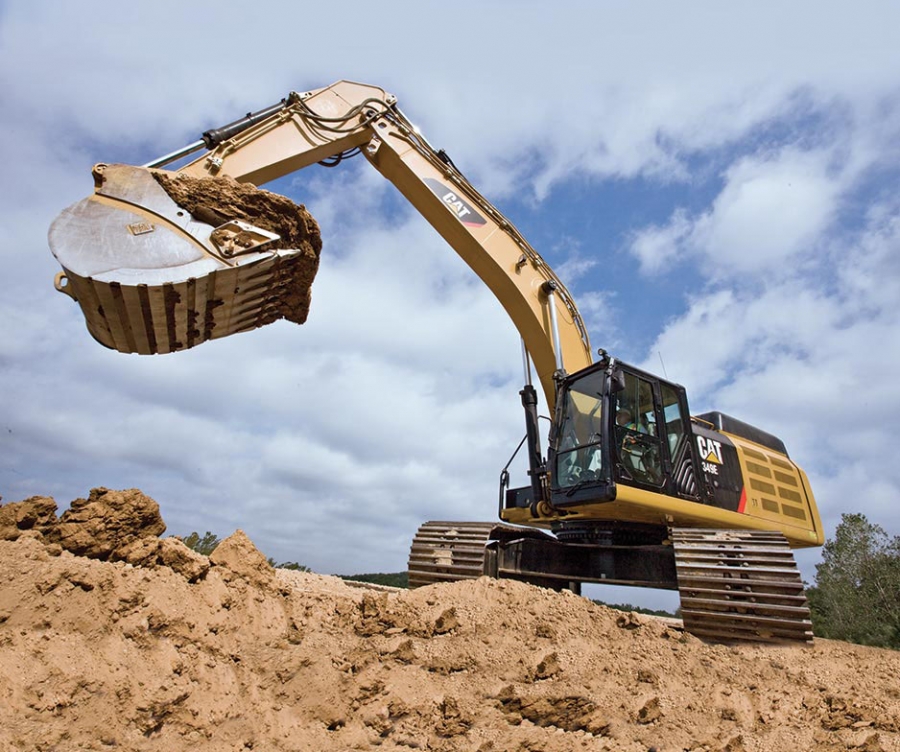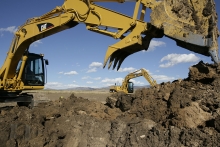A Positive Alternative with Biofuels: A Win–Win for the Construction Industry
As the construction industry continuously looks for ways to enhance its offerings to companies and clients, its abilities to do more with less and to offer better value by using better technologies will provide real benefit. It’s also rewarding for us drivetrain and energy nerds to see the application of some pretty cool and useful technologies such as biofuels that are morphing from research lab to fuel tank and from start-up enterprise to hyper-clean engine.
 Image courtesy of Caterpillar
Image courtesy of Caterpillar
By all indications, the past four to six years of alternative fuels research and development are paying off as the construction industry seeks to become more environmentally responsible, to meet client needs for sustainability and energy efficiency, and ultimately to come into compliance with Tier 4 of the U.S. Environmental Protection Agency's (EPA’s) Clean Air Rules. After much wringing of hands, the heavy equipment industry is finding a new ally with the use of biofuels in heavy equipment. Growing environmental awareness among the general public and a corresponding regulatory framework are making the addition of biofuel to diesel mixes a necessity.
The Current State of Biofuels
Bob McCormick, Principal Engineer in the Fuels Performance Group at the U.S. Department of Energy’s National Renewable Energy Laboratory (NREL), is charged with assessing the compatibility of existing fuel use with the new biofuels. “We’ve done some heavy-duty engine-related research on the performance of biodiesel in conventional diesel mixes. We’re finding, with B5 or 5% mixes, that the performance is virtually indistinguishable from diesel. B20 (or 20%) blends reduce soot emissions significantly, and in research to date we’re not seeing any negative impacts,” McCormick says. "We're also examining the emerging hydrocarbon renewable diesel fuels and finding them to be of very high quality and purity.”
Much of the growth in the biofuels industry is born of our nation’s (and other nations') desire to wean ourselves from the $300 billion annually paid to subsidize fossil fuels. [As Brazilian President Luiz Inacio Lula da Silva famously stated in 2007, "Twenty countries (currently) produce energy for approximately 200 countries."] According to the "Renewables 2011 Global Status Report" published by REN21, "[Biofuel] blending mandates now exist in 31 countries at the national level and in 29 states/provinces around the world."
Increasingly Stringent Emissions Targets
In the continuum of regulatory action that started with the Energy Policy Act of 2005, research and development, abetted by some of the best transfer technology efforts in the world, have produced a significant biofuels industry in the United States. In August 2011, President Obama's administration announced, under a comprehensive new national program, that trucks, vans, and buses built in 2014–2018 will reduce oil consumption by a projected 530 million barrels of oil and greenhouse gas pollution by about 270 million metric tons. Under this joint U.S. Department of Transportation/EPA program, semi trucks are required to reduce fuel consumption and greenhouse gas emissions by 20% by 2018, while heavy-duty pickup trucks and vans will be required to reduce consumption and emissions by about 15%. Similar requirements in the European Union (EU) and other world markets are making biofuels an international phenomenon; such regulatory measures may not only help developed nations to better use clean fuel but may also provide a major source of clean energy to developing nations and their emerging construction economies.
“We’ve done some heavy-duty engine-related research on the performance of biodiesel in conventional diesel mixes. We’re finding, with B5 or 5% mixes, that the performance is virtually indistinguishable from diesel. B20 (or 20%) blends reduce soot emissions significantly, and in research to date we’re not seeing any negative impacts. We're also examining the emerging hydrocarbon renewable diesel fuels and finding them to be of very high quality and purity.” — Bob McCormick, National Renewable Energy Laboratory
The EPA and the European Union have set increasingly stringent emissions targets since 1996 to improve air quality. The Tier 4 regulations will be introduced in two phases, beginning in 2011 with Tier 4A standards. When Tier 4B regulations come into effect at the beginning of 2014, particulate matter (PM) and nitrogen oxides (NOx) will be reduced by 90% compared to Tier 3 levels. According to an EPA press release published in August 2011, “Under new rules announced by the Administration, the nation’s fleet of medium- and heavy-duty trucks will be required to meet fuel efficiency and greenhouse gas emission standards for the first time ever beginning in 2014. Developed jointly by the U.S. Department of Transportation (DOT) and the Environmental Protection Agency (EPA) with support from the trucking industry, the State of California and leaders from the environmental community, the groundbreaking national program will improve energy and national security, benefit consumers and businesses, reduce harmful air pollution, and lower costs for transporting goods while spurring job growth and innovation in the clean energy technology sector.” Called “Paving the Way Toward Cleaner, More Efficient Trucks,” the press release mentions that 20% of greenhouse gas emissions in the United States come from heavy-duty vehicles.
Controversy Surrounding Biofuels
Like all good disruptive technologies, biofuels don’t come without their share of controversy. Discussions have arisen about how the development of biofuels impacts the production of food: biofuels could perhaps be better used to feed the world rather than to burn in machines. As often happens with competing goals, the pursuit of energy independence worldwide has had some unintended consequences, as demonstrated recently in Indonesia where, according to Greenpeace, Neste Oil, a Finnish company and the world’s largest producer of biofuels, purchases some of its palm oil for use in biofuel refining from IOI, a company that has been shown to be responsible for rainforest deforestation (if you are interested in sustainable forestry click here). As a result of these allegations, Neste Oil has stated aims to be using by 2015 only palm oil from producers certified by the Roundtable on Sustainable Palm Oil.
The Future of Biofuels is Collaborative
As with all applied technology, biofuels work best when they’re applied alongside other technologies, such as the air handling supported by Fiat’s MultiAir technology, which improves combustion by over 10% via the application of its engine valve control technology. Similarly, Sturman Engine Systems, of Woodland Park, Colorado, is working on engine control technologies that some say are important enough to garner the support of a Manhattan Project. Sturman Engine Systems is developing a “camless” engine using an electro-hydraulic valve train that is designed to improve efficiency by 40% over a spark-ignited, natural gas engine, as well as achieving an 18% reduction in fuel consumption.
With the large-scale acceptance of biofuels comes a concern that the feedstocks grown to produce them, notably soybeans, compete for arable land, water, and resources that should perhaps be devoted to feeding people and not fueling trucks and cars. The production of algae-based biofuels holds great promise, based on the prolific growth of algae and its high fuel-producing yields on non-arable land with brackish water, leaving fresh water and arable lands for farming.

Morey Bean, AIA, LEED AP
Colorado's 1999 Architect of the Year and Vice Chair of the Boulder Chapter of the Urban Land Institute, Morey’s experience includes the successful development of the Colorado Architecture Partnership, an architecture firm dedicated to sustainability and green building. Morey was appointed by the Chief Architect of the GSA to the National Register of Peer Professionals. He serves as a ULI Service Advisory Panelist and was a charter member of the Colorado Chapter of the USGBC and past president of the Colorado South Chapter of the AIA. He is a construction litigation services expert witness, land development analyst and sustainability strategies consultant.
The author was honored by the Colorado Component of the American Institute of Architects as their Architect of the Year in 1999 and is on the Roster of Neutrals for the American Arbitration Association (AAA), providing dispute settlement for the design and construction industry.
Website: www.cyberarchitects.com


